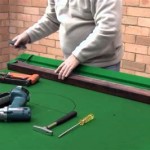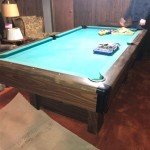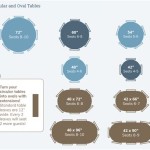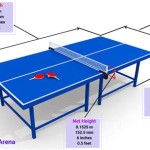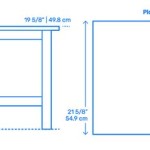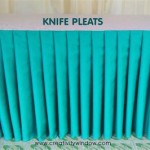Replacement Wooden Dining Table Legs: A Comprehensive Guide
The integrity of a dining table hinges significantly on the stability and appearance of its legs. Over time, these crucial components may become damaged, worn, or simply fall out of favor aesthetically. Replacing wooden dining table legs presents a viable solution to extend the life and enhance the look of a cherished dining set. This article provides a comprehensive overview of the process, considerations, and options available when undertaking this particular home improvement project.
Assessing the Need for Replacement
Before embarking on the process of replacement, a thorough assessment of the existing legs and their condition is crucial. Determining the extent of the damage and identifying the root cause can influence the choice of replacement options and the method of installation. Several factors might necessitate replacing dining table legs, including structural damage, aesthetic concerns, and functional improvements.
Structural damage manifests in various forms, such as splits, cracks, warping, or rot. These issues compromise the stability of the table, potentially leading to accidents or further damage to the tabletop. The severity of the damage dictates whether repair is feasible or replacement is necessary. Minor scratches or cosmetic imperfections might be addressed with refinishing techniques, whereas significant structural deterioration warrants complete replacement.
Aesthetic concerns often drive the desire for replacement. Homeowners might wish to update the style of their dining table to align with changing interior design trends or personal preferences. Outdated or mismatched legs can detract from the overall aesthetic appeal of the dining area. Replacing the legs with a more modern or complementary design can significantly enhance the table's appearance and integrate it seamlessly into the surrounding environment.
Functional improvements represent another valid reason for replacing dining table legs. Altering the height of the table, improving its stability on uneven floors, or adding features such as casters for mobility can be achieved through leg replacement. Raising the table to accommodate taller chairs or lowering it for a more intimate dining experience are common functional adjustments. Additionally, adjustable legs can compensate for uneven flooring, ensuring a level and stable surface.
Selecting the Right Replacement Legs
Choosing the appropriate replacement wooden dining table legs involves considering several factors, including material, style, size, and attachment method. Careful consideration of these aspects ensures a seamless integration with the existing tabletop and desired aesthetic.
The material of the replacement legs should ideally match or complement the tabletop. Common wood species include oak, maple, birch, and pine, each possessing distinct characteristics in terms of grain, color, and hardness. Matching the wood species ensures a consistent appearance and structural integrity. Alternatively, contrasting wood species can create a deliberate visual effect, but careful consideration should be given to the overall aesthetic harmony.
The style of the replacement legs should align with the overall design of the dining table and the surrounding décor. Options range from traditional turned legs to sleek, modern designs. Traditional styles often feature intricate carvings and ornate details, while modern styles emphasize clean lines and minimalist forms. Selecting a style that complements the tabletop and the room's aesthetic creates a cohesive and visually appealing dining area.
The size of the replacement legs is crucial for achieving the desired table height and stability. The height of the legs determines the overall height of the dining table, which should be suitable for comfortable dining with the chosen chairs. In addition to height, the thickness and width of the legs contribute to the table's stability. Thicker legs generally provide greater support, particularly for larger or heavier tabletops.
The attachment method is a critical consideration when selecting replacement legs. Common attachment methods include bolt-on brackets, screw-in plates, and mortise-and-tenon joints. Bolt-on brackets are a simple and versatile option, suitable for a wide range of table designs. Screw-in plates provide a secure attachment point for legs with pre-drilled holes. Mortise-and-tenon joints offer a strong and traditional connection, requiring more skill and precision to install. The choice of attachment method depends on the existing tabletop's construction and the desired level of stability.
Installation Process and Considerations
The installation process for replacement wooden dining table legs typically involves removing the old legs, preparing the tabletop for the new legs, and attaching the replacement legs securely. Following a systematic approach and using appropriate tools ensures a successful and stable installation.
Removing the old legs requires careful attention to the existing attachment method. If the legs are attached with bolts or screws, these should be removed using the appropriate tools. If the legs are glued or otherwise permanently attached, gentle prying may be necessary. Care should be taken to avoid damaging the tabletop during the removal process. If the existing legs are firmly attached, applying heat or using a solvent to loosen the adhesive may be helpful.
Preparing the tabletop for the new legs involves cleaning the attachment points and ensuring a smooth and level surface. Any remnants of the old attachment hardware or adhesive should be removed. If necessary, the surface can be sanded to create a level base for the new leg brackets or plates. Drilling pilot holes for screws or bolts can facilitate the attachment process and prevent splitting the wood.
Attaching the replacement legs securely is crucial for ensuring the table's stability. Following the manufacturer's instructions for the chosen attachment method is essential. Bolt-on brackets should be aligned properly and tightened securely. Screw-in plates should be attached with appropriate screws, ensuring they are driven straight and flush with the surface. Mortise-and-tenon joints require precise alignment and gluing for a strong and lasting connection. After attaching the legs, it is important to test the table's stability and make any necessary adjustments.
Several additional considerations can enhance the success of the installation process. Using leveling feet on the bottom of the legs can compensate for uneven floors and ensure a stable surface. Applying felt pads to the bottom of the legs can protect flooring from scratches and prevent the table from sliding. Sealing or finishing the replacement legs to match the tabletop can enhance the aesthetic consistency and protect the wood from moisture and wear.
Moreover, when selecting the new replacement legs, the origin of the wood should be considered, especially if sustainability is a factor. Choosing legs crafted from responsibly sourced wood helps to minimize the environmental impact of the project. Many vendors offer options certified by organizations that promote sustainable forestry practices. Investing in quality hardware and attachment mechanisms is also imperative to guarantee prolonged stability. Opting for durable screws, bolts, or adhesive contributes significantly to the longevity of the newly attached legs.
Prior to the final attachment of the replacement legs, conducting a dry fit is highly advisable. This involves positioning the legs on the tabletop without permanently affixing them to assess the fit and alignment. A dry fit allows for any necessary adjustments to be made before the final stage, thus averting potential complications or the need for rework. Ensure the legs are at consistent angles and that they are equidistant from the corners of the table. Also, verifying that the leg style truly complements the tabletop is made easier through the dry-fit process.
Safety precautions should also be adhered to throughout the entire procedure. When removing the existing legs, wearing safety goggles and gloves is crucial to protect against any splinters or fragments. When drilling pilot holes, it's important to use appropriate safety glasses and to secure the tabletop firmly to prevent movement. When using power tools, always follow the manufacturer's guidelines and recommendations to prevent possible injuries. The workspace should be clean, well-lit, and uncluttered to minimize the risk of accidents.
Ensuring proper maintenance of the dining table legs after installation will extend their life. Regular cleaning with a soft cloth will prevent dirt and debris from accumulating on the surface. Periodically tightening any bolts or screws will prevent wobbling or instability. If the legs are finished with varnish or sealant, applying a fresh coat every couple of years will offer enhanced protection against wear and moisture. Checking the leveling feet on a regular basis will also maintain the table’s level on uneven surfaces.

Reclaimed Wood X Style Table Leg Coffee Dining Kitchen Legs Wooden Diy Replacement Redo Ideas Home Furniture Rustic Farmhouse

Reclaimed Wood X Style Table Leg Coffee Dining Kitchen Legs Wooden Diy Replacement Redo Ideas Home Furniture Rustic Farmhouse

Lavane 3 Inch 8 Cm Wooden Furniture Legs Set Of 4 Mid Century Modern Solid Wood Square Pyramid Walnut Replacement Feet With 5 16 Hanger Bolt Mounting Plate For Diy Cabinet Sofa

Set Of 4 Furniture Wood Legs Tapered Pyramid Replacement 10 69cm Feet

Reclaimed Wood X Style Table Leg Coffee Dining Kitchen Legs Wooden Diy Replacement Redo Ideas Home Furniture Rustic Farmhouse In

Buy Ventuos Metal Table Legs 28 Inch Replacement Heavy Duty Square Tube Desk Furniture For Coffee Dining Z Shape Pack Of 2 At Best S

Hvxrjkn 4pcs 6cm Solid Wood Furniture Legs Sofa Cabinets Beds Leg Wooden Replacement Square For Settee Table Home Accessories Com

Hard Wooden Feet For Furniture To Repair Turned Wood Leg

Set Of 4 Solid Wood Slanted Furniture Legs 8cm Replacement With Mounting Plate And S For Sofa Tv Bed Dining Table Fruugo No

Buy Ventuos Metal Table Legs 28 Inch Replacement Heavy Duty Square Tube Desk Furniture For Coffee Dining Z Shape Pack Of 2 At Best S

